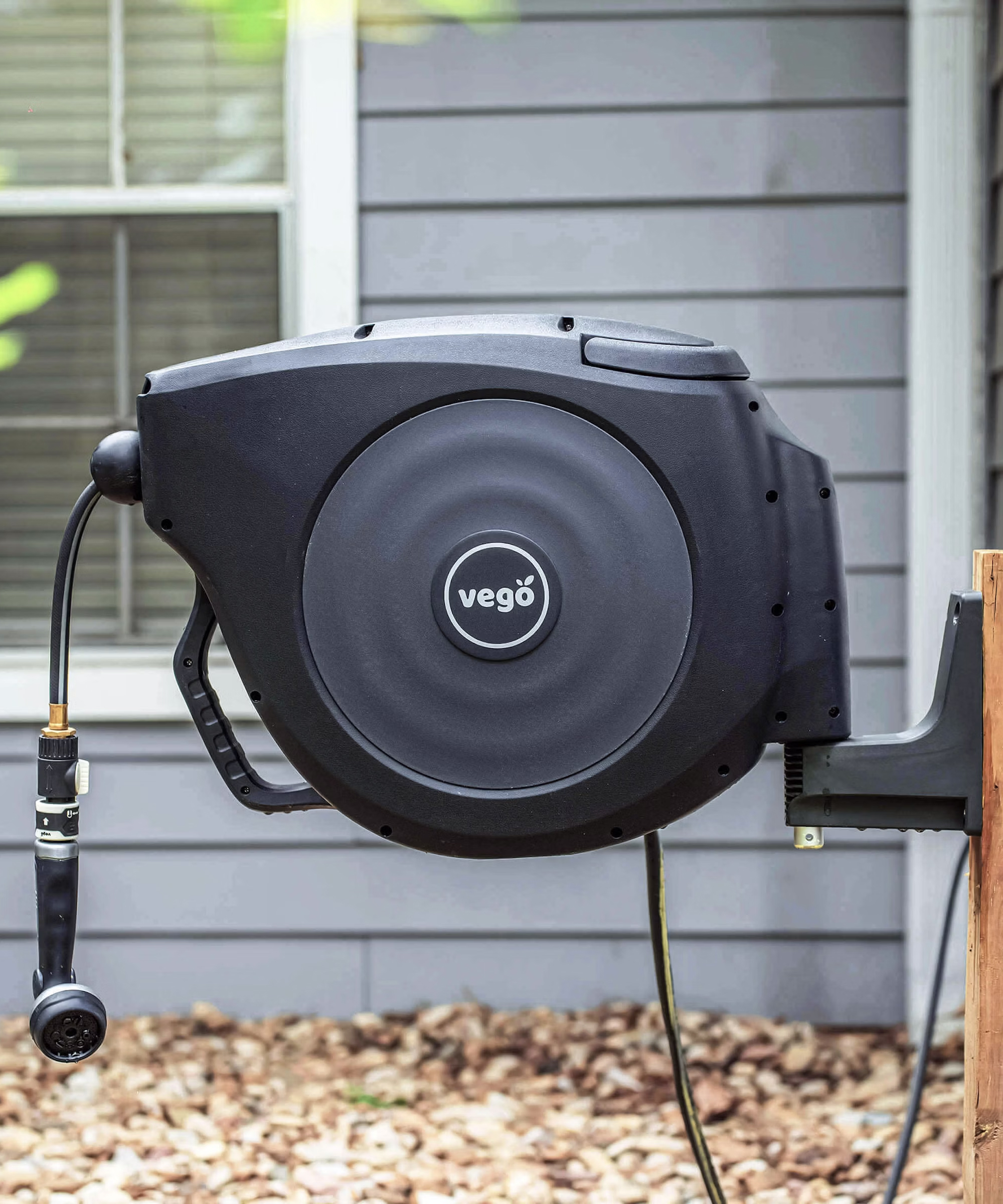How To Create A Layered Garden – Landscape Design Principles For Every Gardener
A layered garden will take your landscape to the next level. For both vertical and horizontal eye appeal, as well as seasonal interest, try this method.
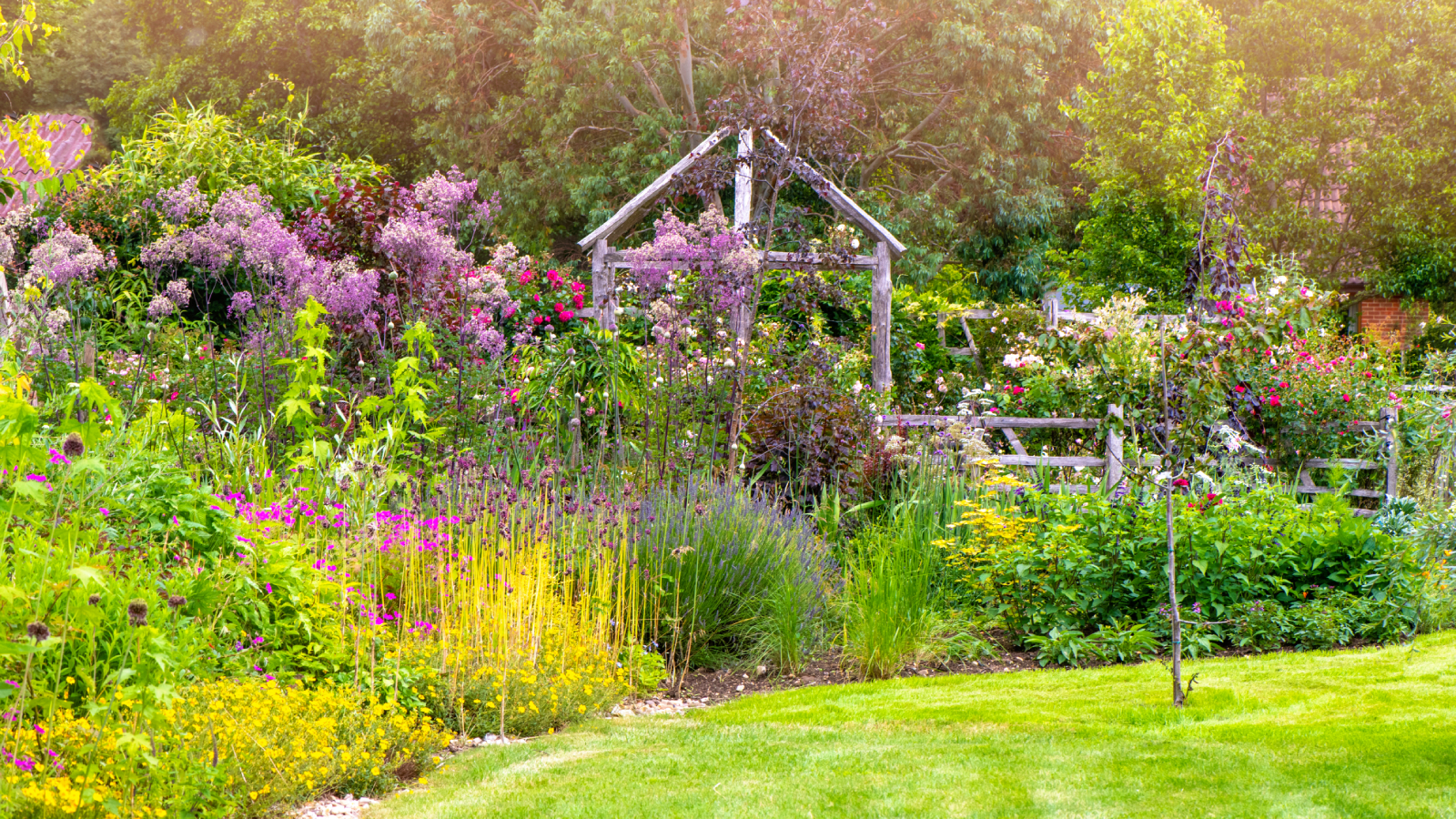

A layered garden is a design concept that will help plants merge in an appealing manner. The practice relies on placing plants where their attributes feature in the most complimentary way and they receive the ideal amount of sun and space.
Each plant has its own characteristics, with some loud and bold, while others are demure and softer. Designing with garden bed layers allows each plant to have the perfect spot. Your goals for the garden design may be for color interest, vertical appeal, or as a cover for an unsightly area.
Whether vegetables or ornamentals, the layered landscape will ensure that each plant is not the star of the show but part of a magnificent ensemble.
Create Layers
Layered landscaping takes a little bit of planning. First you will need to create a garden bed, preferably near a water source. Most plants prefer loose, but organically rich, soil with an average pH. Incorporate amendments to the existing soil as needed, such as compost, leaf litter, or other organic sources. The bed may be bordered or natural.
You may wish to install foot stones or a garden path in larger areas for easy access during maintenance. Once you have the basic site prepared it is time to plan the arrangement of plants. How to layer a garden bed? Think of it like a pyramid with graduating color, form, and tone escalating to the rear of the bed.
Ground Layer
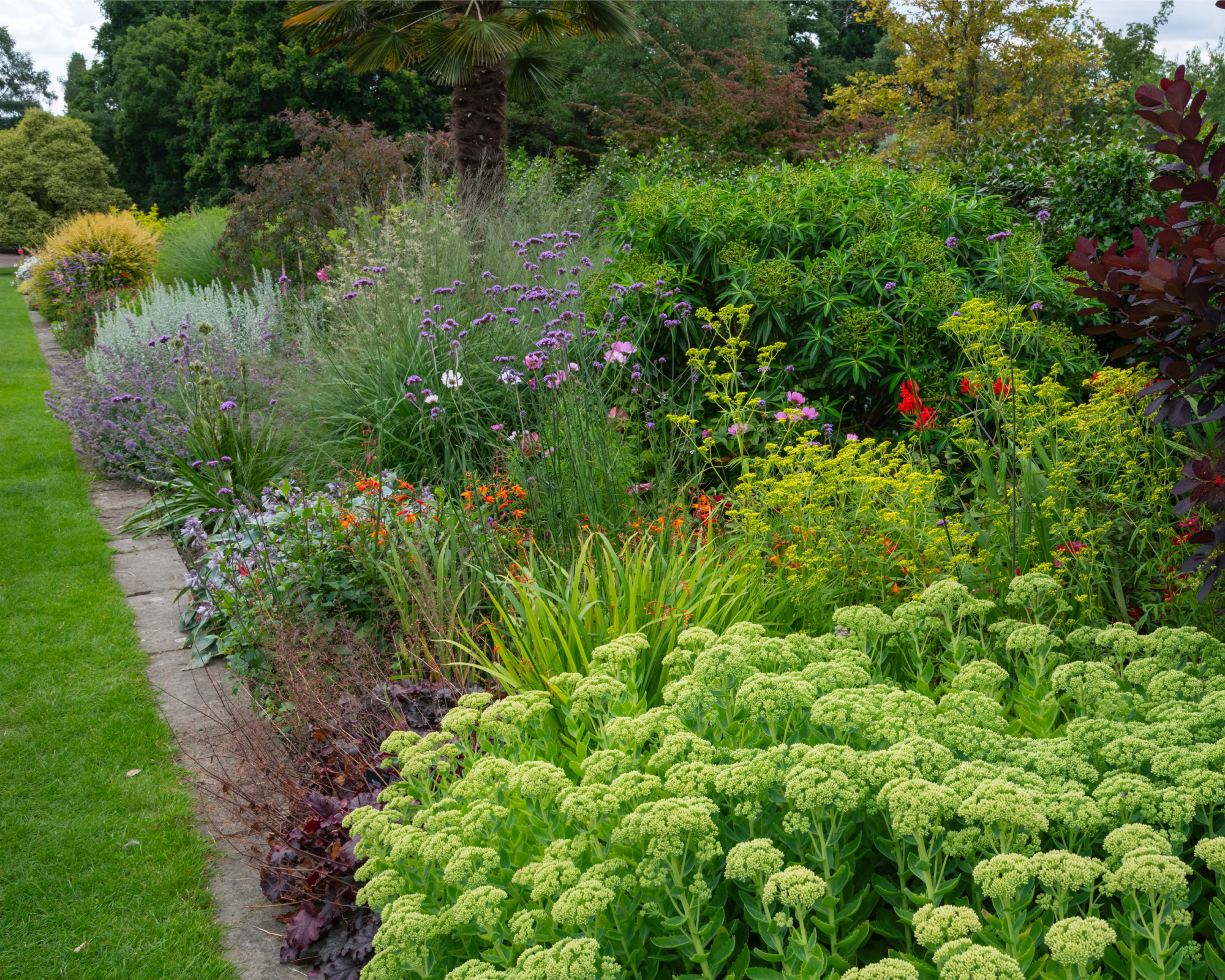
Ground cover plants are an excellent way to hide drip irrigation, prevent erosion, and tie a garden together with foliar or floral accents. Most ground covers are less than a couple of inches (5 cm.) tall. Their diminutive size allows them to creep amongst their brethren, gently brushing across other plant’s stems and trunks.
- Sedum: You can’t go wrong with sedum. There are many varieties from which to choose and they are a low maintenance, drought-tolerant plant. Over time, the succulent will spread and fill in around rocks, paths, and other plants. They produce beautiful, golden, starry flowers in spring and are very easy to propagate.
- Wooly Thyme: With a scent to die for and soft, fuzzy leaves, wooly thyme is a perfect ground cover. It produces deep purple spring flowers and spreads gently across the ground. This plant is also drought tolerant once established, but best growth occurs with regular irrigation.
- Mondo Grass: I love to use this plant as a ground cover. It is basically a miniature decorative, clumping grass. The standard green form is nice, but there is also black Mondo grass which has an exciting presence in the garden.
- Blue Star Creeper: This is a foolproof plant that has tiny, periwinkle blue flowers. The softly curved leaves are small and tightly clustered. Over time, blue star creeper will colonize and fill in. It does have the capacity to overrun an area but it is excellent if a tame landscape isn’t the look you are going after.
- Creeping Phlox: This adaptable ground cover will thrive in either full sun or partial shade. Creeping phlox produces a lilac hued, 5-petaled flower that is densely present on the mat of foliage. It prefers full sun, in moderately moist soil.
Foreground Layer
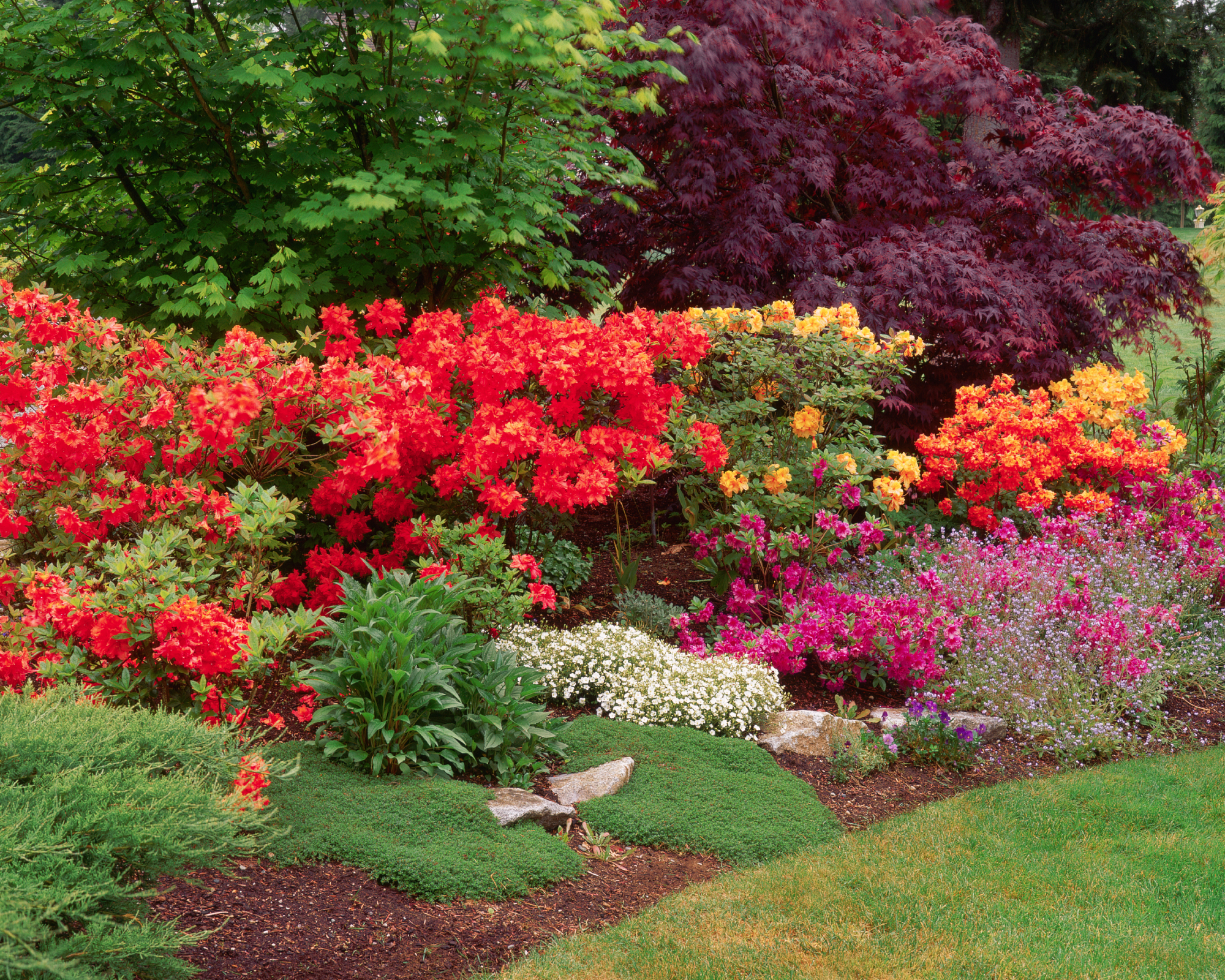
The plants at the front of a garden bed should be shorter than those at the back to avoid blocking their light and covering up those specimens. Most often these are annual bedding plants, bulbs, and smaller perennials. Such plants attract the eye when planted in groupings. The rule of thumb is odd numbers, but you should do as many as you wish. Border plants such as smaller clumping grasses are also excellent in the foreground. Try to select plants that are between a few inches (7.62 cm.) and 2 feet (.61 m.) in height.
Sign up for the Gardening Know How newsletter today and receive a free copy of our e-book "How to Grow Delicious Tomatoes".
- Small Ferns: Ferns have a lacy, airy quality that is delicate and architectural. Painted ferns have attractive patterning on their fronds while Cinnamon fern has short, erect frond clusters.
- Bulbs: You don’t have to go classic with only tulip or daffodil bulbs. Depending upon the light in the area, ranunculus, crocus, snowdrop, allium, and Fritillaria are some other options. With careful planning you can have flowering bulbs across the site from spring into fall.
- Dwarf Grasses: Dwarf grasses like some sedges, Liriope, or Corkscrew Rush, add movement and dimension to the front of a garden bed. These plants also look best in groups. Hakonechloa is a Hawaiian grass with golden cascading blades that drape over the edges of the bed.
- Annuals: Annuals are classic border plants that will brighten the front of the garden design. Marigolds, petunias, calibrachoa, and zinnias are all easy to grow from seed or relatively inexpensive at nurseries.
- Small bushes: Depending upon the scale of the plants in the background, smaller shrubs are nice contrasts for the front of the area. Deutzia, dwarf azalea, and 'Tater Tot' Arborvitae lend texture and dimension without overpowering the rest of the planting spectacle.
Midground Layer
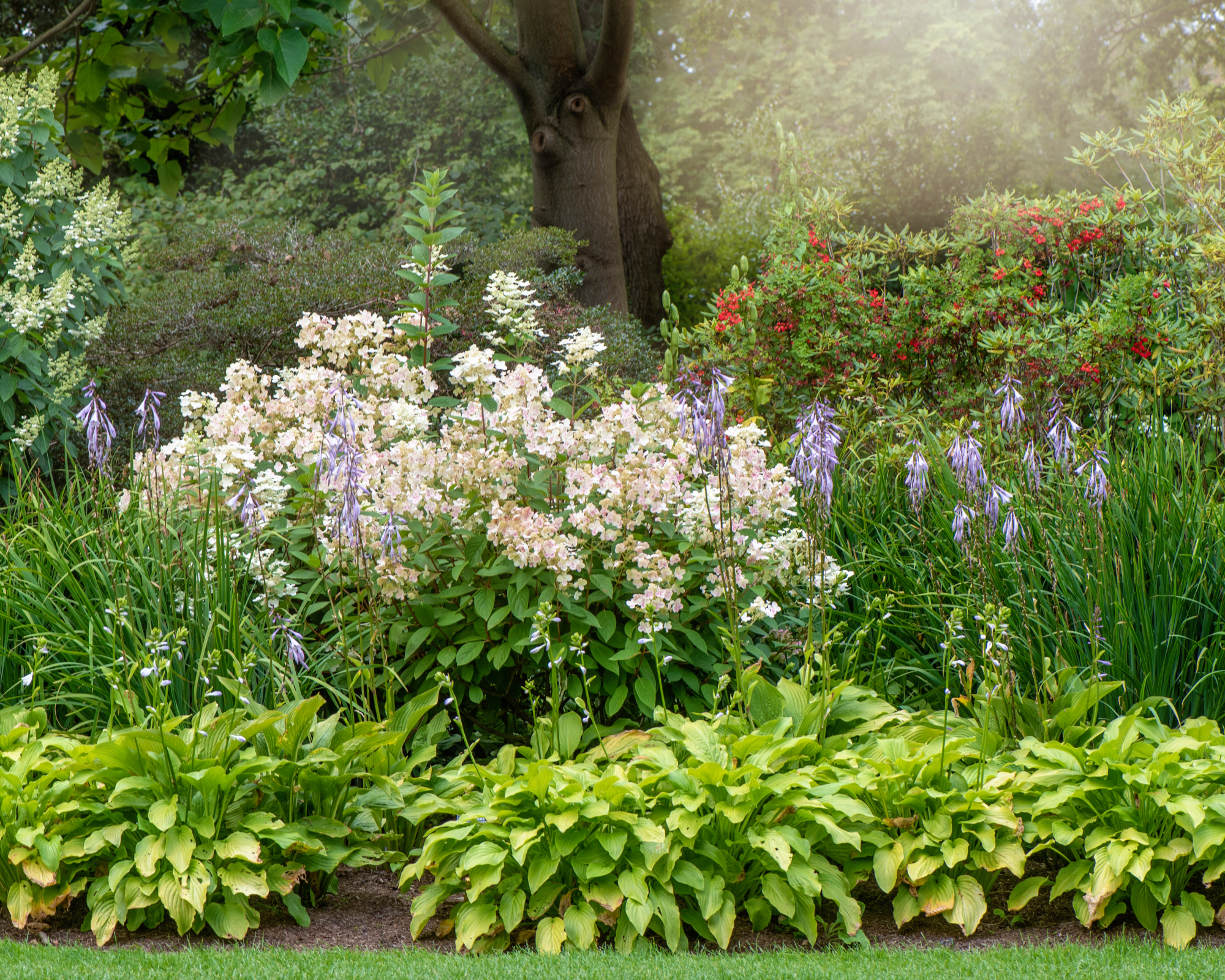
The mid section of the garden can begin to contain some larger specimens but nothing should be taller than 4-5 feet (1.2-1.5 m.). Here is a chance to play with form and dimension, as these larger plants can be focal points.
- Hydrangea: There are several basic flower forms in this group of plants. The eye catching huge pom poms, narrow lilac-like cones, and sparse clusters of tiny flowers. The leaf form may be broad or oakleaf. Hydrangea come in many sizes and new colors like lime green.
- Hosta: Smaller hostas would work well in the foreground but the larger cultivars add foliar appeal to the midsection of the planting scheme. Hosta are mostly grown for their huge leaves but they also produce charming, little, dangling bells in spring.
- Perennials: Perennials can really shine in the middle of the garden. Some of the more appealing are echinacea, hibiscus, aster, and giant hyssop.
- Roses: Roses are the grande dames of the garden. They may be a little fussy, but when they are looking well, there are few plants that can match their floral beauty and scent.
- Nandina: False bamboo has much of the elegance of real bamboo without the potential invasiveness. Plus, nandina only gets around 5 feet (1.5 m.) high. It offers delicate leaves with green and red coloring.
Background Layer
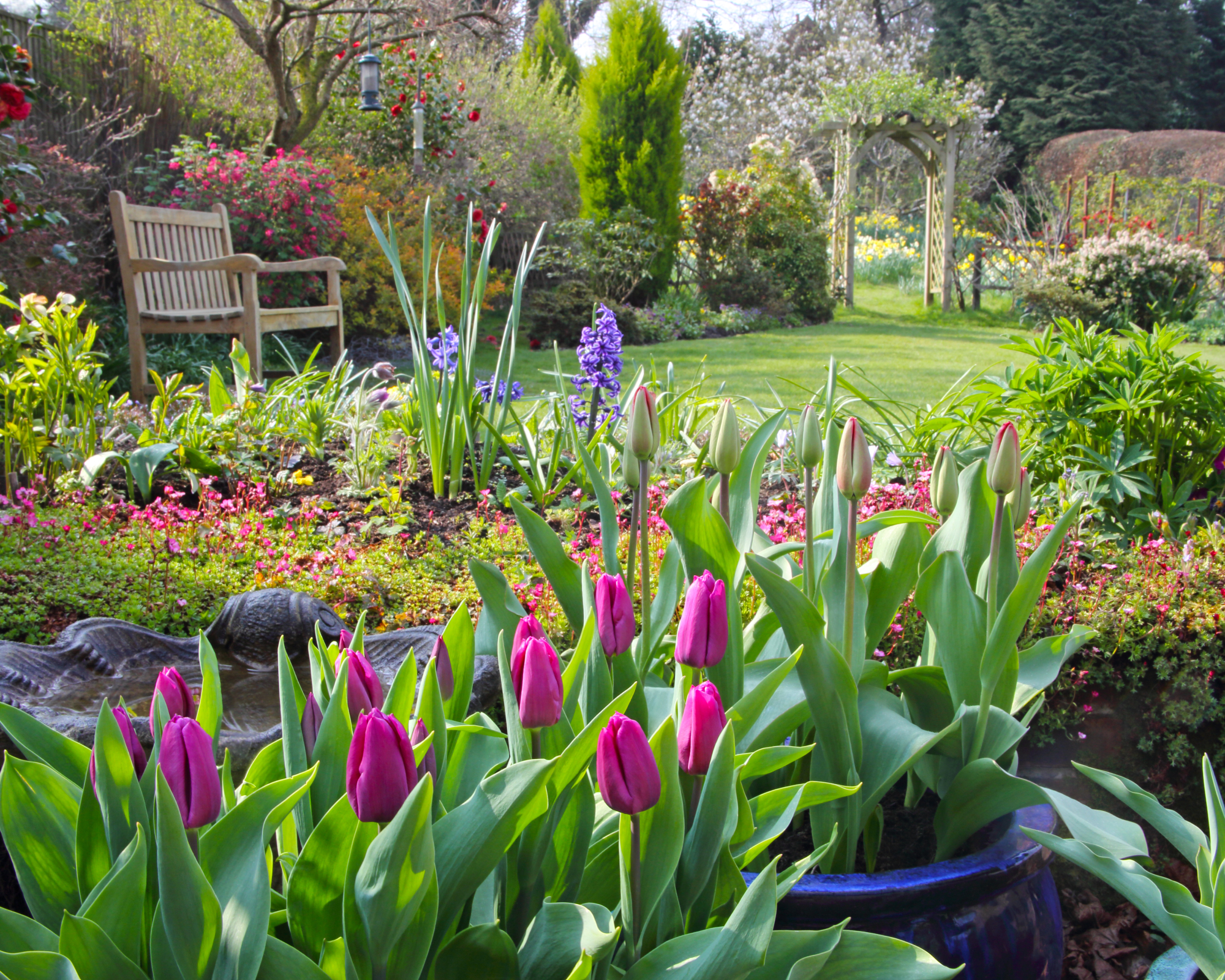
This is the space where you can draw the eye upward. Mix different leaf textures and in the case of deciduous plants, use those with interesting twigs and stems once the leaves fall. Cool colored plants will make the space larger, while bright colored plants bring the viewer closer.
Trees, evergreens, and taller shrubs form the background of layered landscaping. When choosing your larger plants, don’t overwhelm the front species. For instance, if your plants tend to be on the smaller side, don’t put an elm in the back. Choose smaller trees and bushes that will gradually carry the eye.
- Weeping Cherry: While fruitless, the weeping cherry has a lovely form as the stems arch gently. The frilled pink blossoms in spring send a flurry of charming petals dancing in the wind.
- Arborvitae: A stalwart of the garden, arborvitae is an evergreen with impressive hardiness and adaptability. These plants are also quite affordable and available.
- Clumping bamboo: The running bamboo has a bad reputation and for good reason. But clumping bamboo is its well behaved brother. The rustle of the leaves, the thick, erect stems, and the color make it ideal for back of the bed duty.
- Rose of Sharon: This herbaceous plant can grow up to 8 feet (2.4 m.). Rose of Sharon produces delicate flowers in red, white, pink, or purple. It is also low maintenance and drought tolerant when it is established.
- Elderberry: This is one of my favorites. The lacy leaves, bright berries, and clusters of tiny flowers give elderberry three seasons of appeal. You can also be quite rude in pruning it to size if necessary.
Layering Bloom Times
One thing to consider as you plant a garden with color is to extend the blooming period. Install plants that flower in spring, those that flower all season long, and those that bloom in fall like chrysanthemum. It is easy and effective to build your garden using the lasagna gardening method.
Layer your bulbs so that once the fall bulbs have finished blooming in spring, the summer bloomers are beginning to come up. In this way you will have successive blooms for an almost year round flowering garden.
Add Hardscape Elements
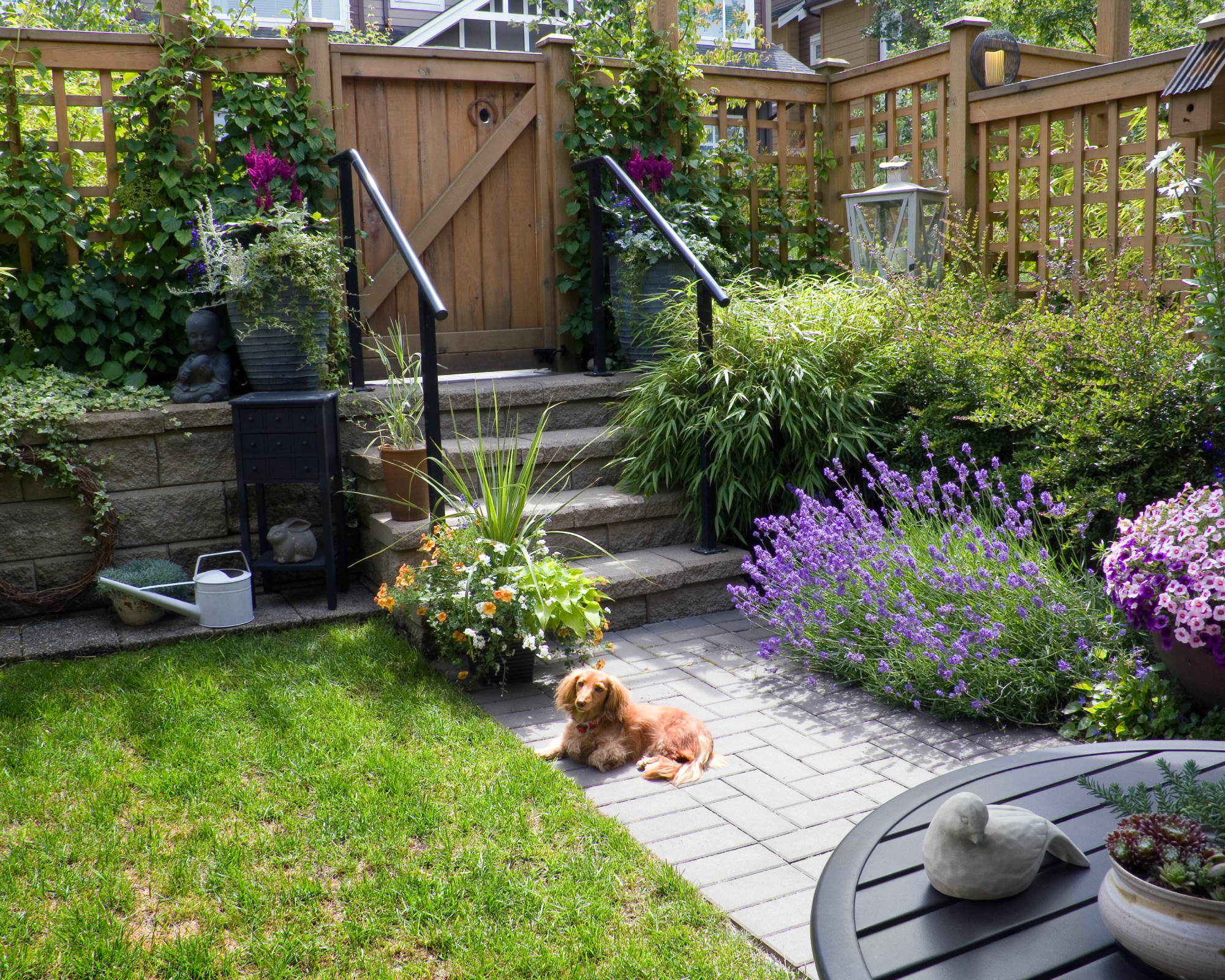
Adding hardscape details can enhance the charm of the garden, fill a practical purpose, and define the space. A sundial, large dimensional rocks, a bench, paths, steps, a water feature. These can also enhance the space and provide rest and gentle ambient sound.
This article features products available from third-party vendors in the Gardening Know How Shop.

Bonnie Grant is a professional landscaper with a Certification in Urban Gardening. She has been gardening and writing for 15 years. A former professional chef, she has a passion for edible landscaping.
